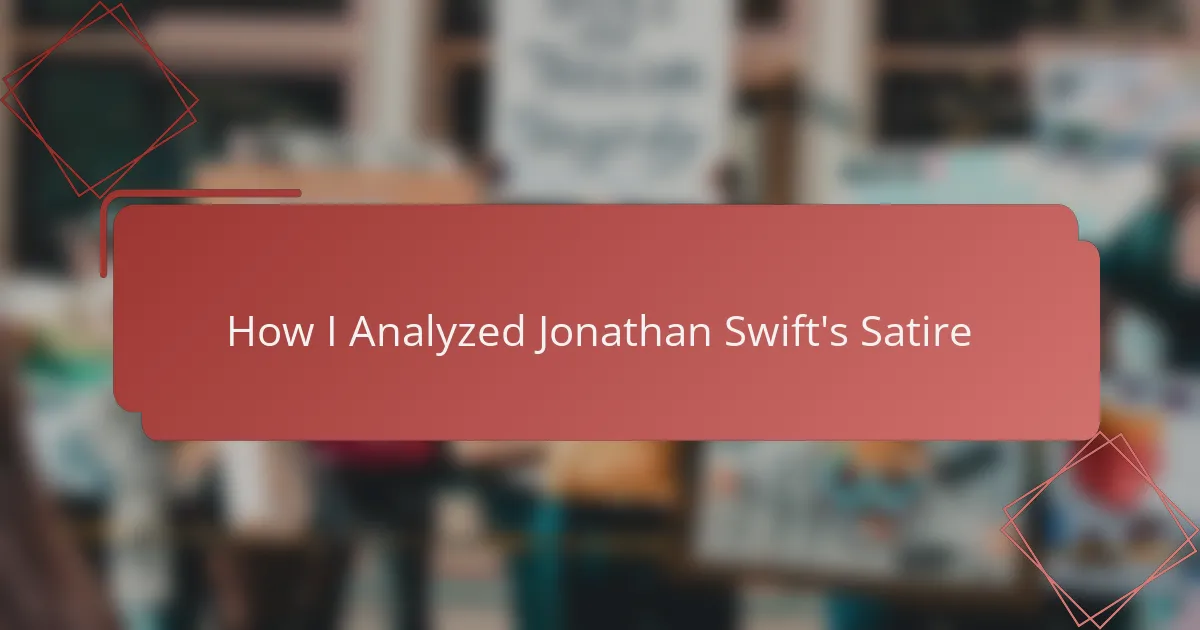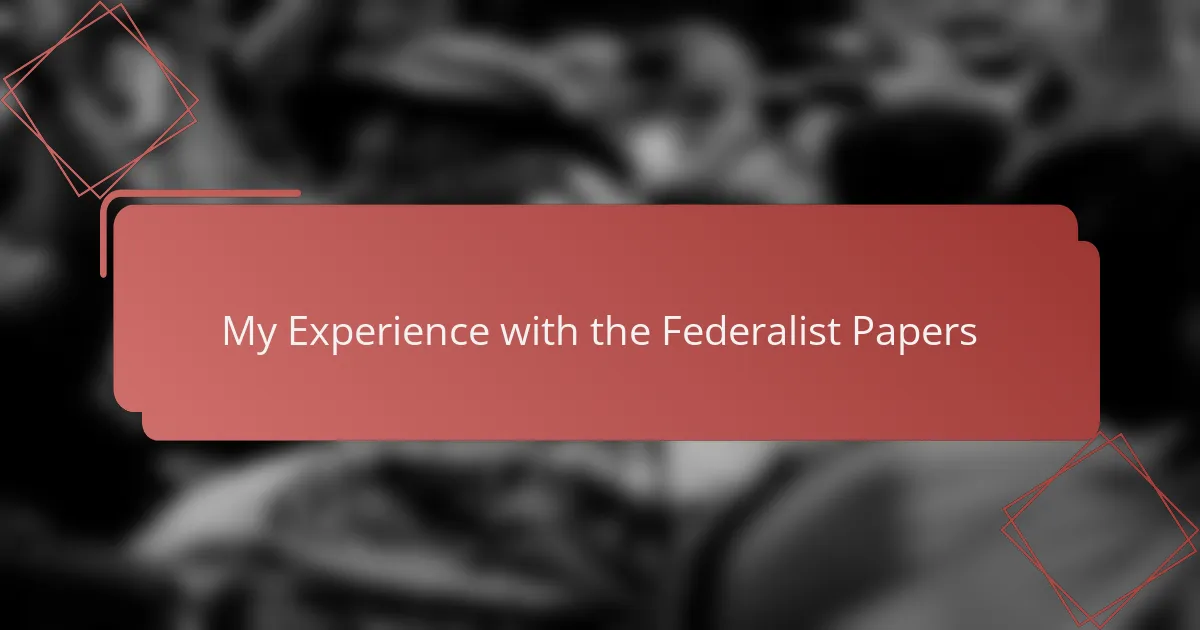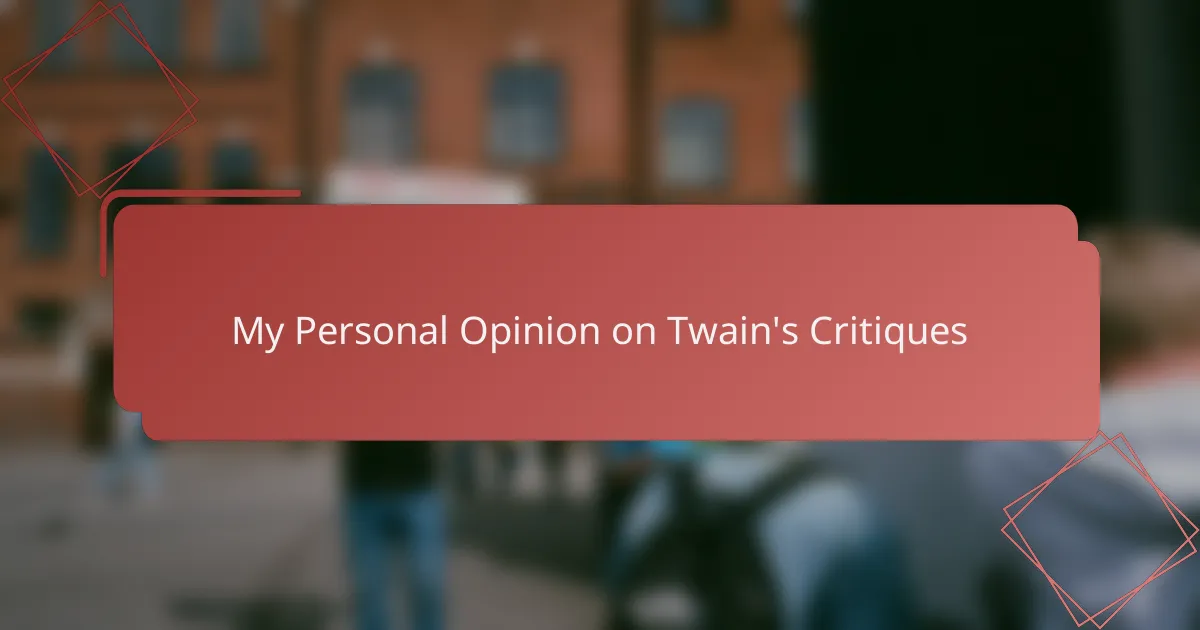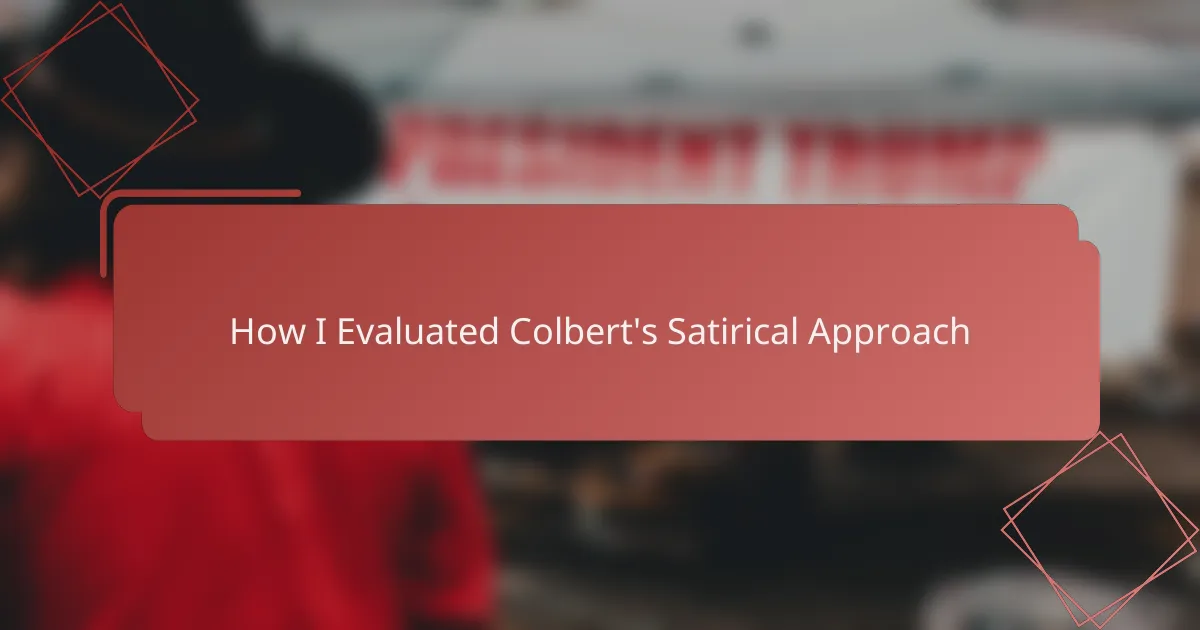Key takeaways
- Political satire combines humor with serious critique, exposing absurdities and prompting reflection on societal issues.
- Jonathan Swift employs irony, exaggeration, and persona to effectively critique social and political flaws, inviting readers to engage thoughtfully.
- Analyzing satire requires understanding its historical context and recognizing the emotional responses it evokes, enhancing its relevance.
- Lessons from Swift emphasize the power of subtlety in political critique, using humor to provoke thought without alienating the audience.
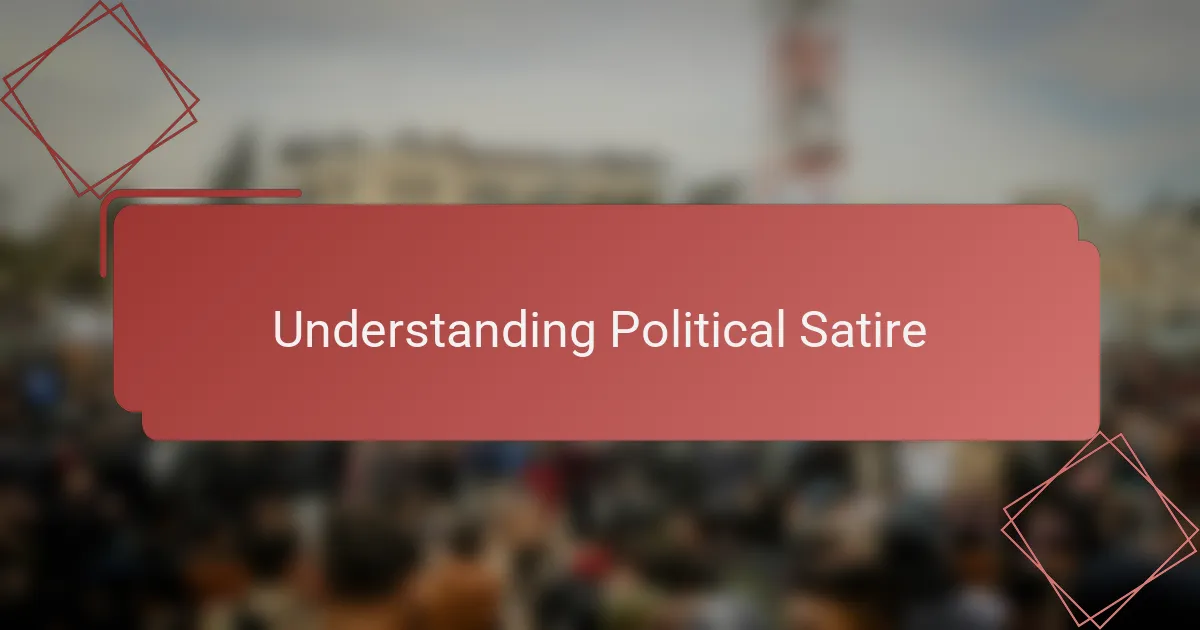
Understanding Political Satire
Political satire, to me, feels like a clever dance between humor and serious critique. It’s not just about making people laugh; it’s about exposing the absurdities and contradictions in politics in a way that sticks with you. Have you ever caught yourself laughing at something, only to realize it’s actually making a sharp point about society? That’s political satire at work.
When I first encountered political satire, I was struck by how it bypassed traditional arguments. Instead of dry facts, satire uses irony, exaggeration, and wit to challenge power structures. It’s like a spotlight that reveals hidden truths while entertaining, which makes the message all the more powerful and memorable.
Understanding political satire means recognizing its dual role: to amuse and to provoke thought. It often feels like a mirror held up to society, reflecting its flaws in a way that’s hard to ignore. I find it fascinating how satire can simultaneously comfort and disturb, making us laugh while questioning the world around us.
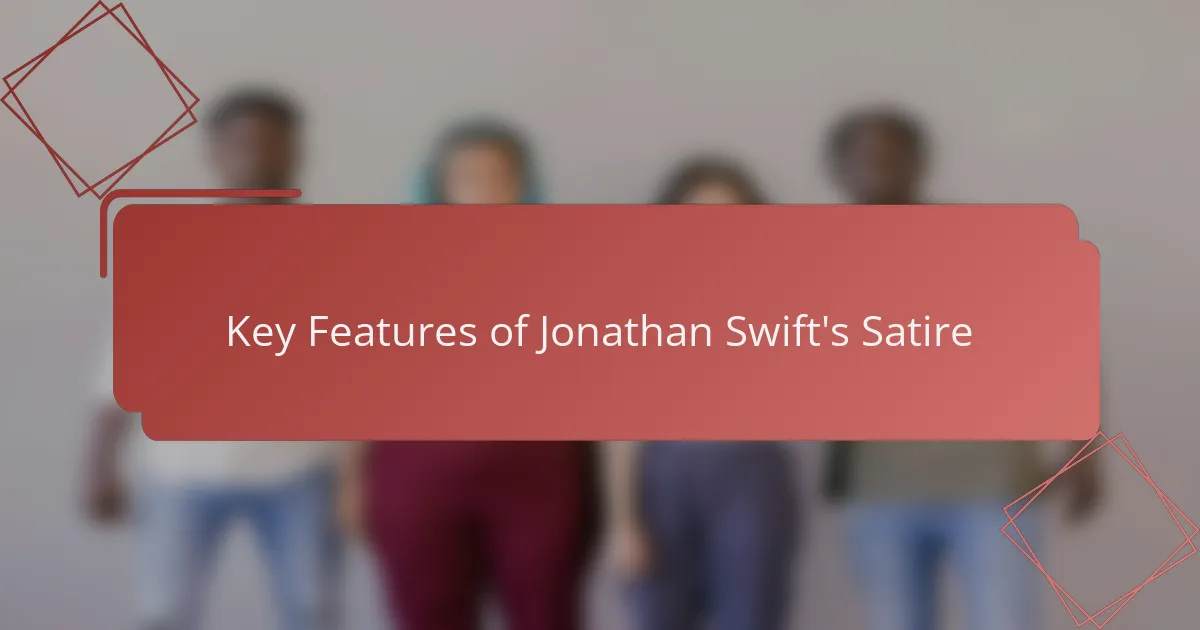
Key Features of Jonathan Swift’s Satire
Jonathan Swift’s satire strikes me as sharp yet deeply nuanced, where irony and exaggeration serve not just to mock, but to provoke serious reflection. From my experience examining his works, I find his ability to blend humor with biting social criticism especially powerful—it’s like he’s inviting readers to laugh and then pause, realizing the harsh truths behind the joke. His use of persona, particularly in works like “A Modest Proposal,” makes the satire feel personal and unsettling, which I think intensifies its impact.
| Feature | Swift’s Approach |
|---|---|
| Irony | Masterful use to highlight absurdity in social and political issues |
| Exaggeration | Used to an extreme degree to shock readers into awareness |
| Persona Adoption | Creates distinct, often unreliable narrators to add layers to satire |
| Social Criticism | Targets injustices and societal flaws with a mix of humor and moral seriousness |
| Emotional Engagement | Evokes discomfort along with laughter, making the message memorable |
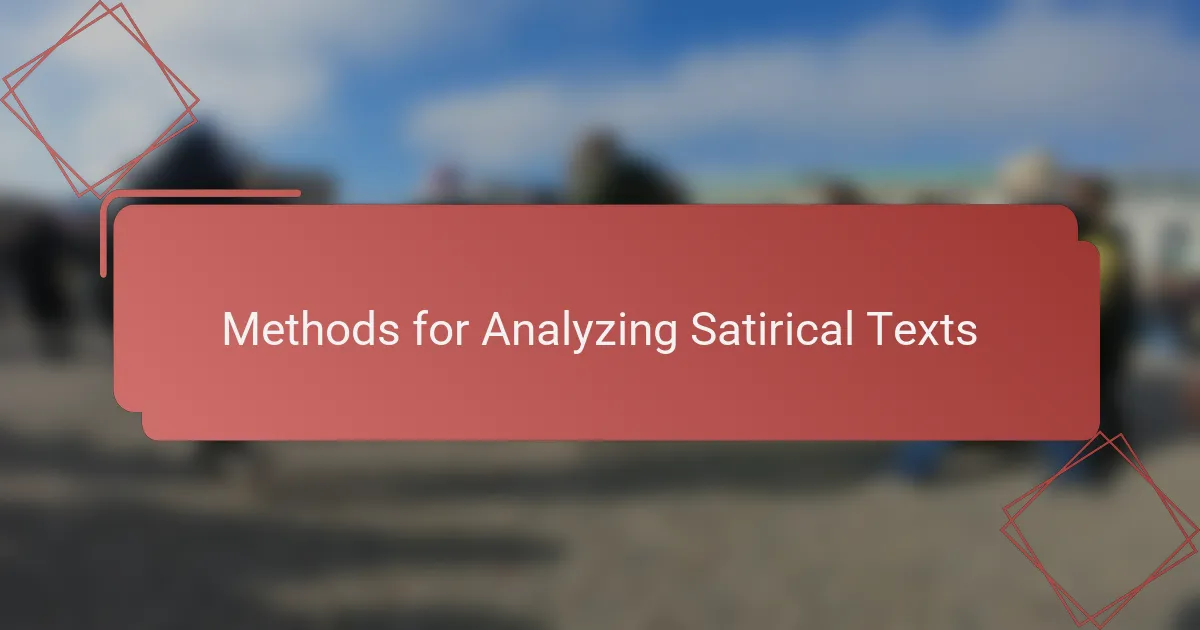
Methods for Analyzing Satirical Texts
Analyzing satirical texts requires a careful balance between understanding the surface humor and uncovering the deeper political critique embedded within. When I first approached Jonathan Swift’s works, I realized that a close reading to detect irony and exaggeration was essential, but equally important was recognizing the historical context that shaped his satirical targets. This dual approach helped me appreciate not just the wit, but the urgent social commentary beneath.
To break down Swift’s satire effectively, I relied on several methods that allowed me to dissect both form and meaning:
- Identify key rhetorical devices such as irony, sarcasm, and hyperbole
- Examine the historical and political background relevant to the text
- Analyze character behavior and narrative tone for implicit criticism
- Compare Swift’s satire with contemporary political issues
- Reflect on personal emotional reactions to understand the satire’s impact
These steps turned my reading into an engaging exploration, revealing how Swift’s satire remains strikingly relevant today.
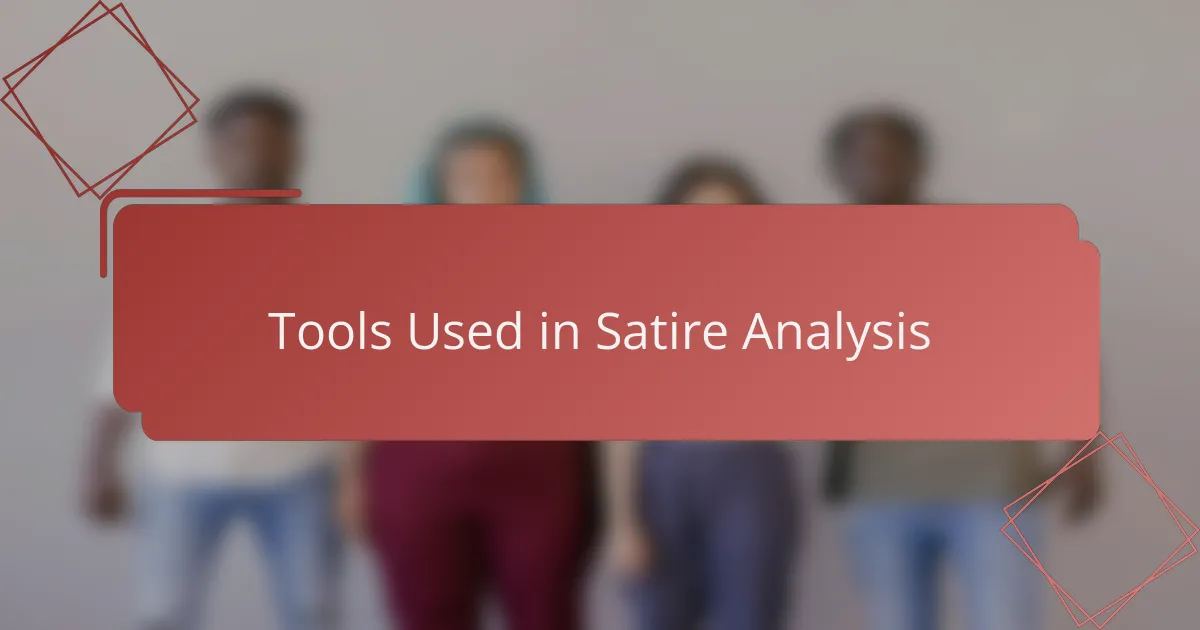
Tools Used in Satire Analysis
When I started breaking down Jonathan Swift’s satire, I found that digital text analysis tools were surprisingly helpful. Software that highlights rhetorical devices like irony or exaggeration made it easier to spot these elements without losing the nuance. Have you ever tried reading a dense satirical passage and felt overwhelmed? Tools like these act as a guide, pointing you toward the clever tricks Swift uses.
Besides digital aids, I leaned heavily on historical archives and context databases. Understanding the political climate of Swift’s time was like unlocking a secret code; suddenly, the biting sarcasm made much more sense. Accessing primary sources and contemporary responses to his work gave me insights that pure textual analysis couldn’t provide.
Of course, I can’t overlook the value of good old-fashioned note-taking and discussion. I often jotted down my emotional reactions and questions as I read, then compared these notes with scholarly interpretations. This blend of personal reflection and academic tools created a richer, more layered understanding of Swift’s satire that I found deeply rewarding.
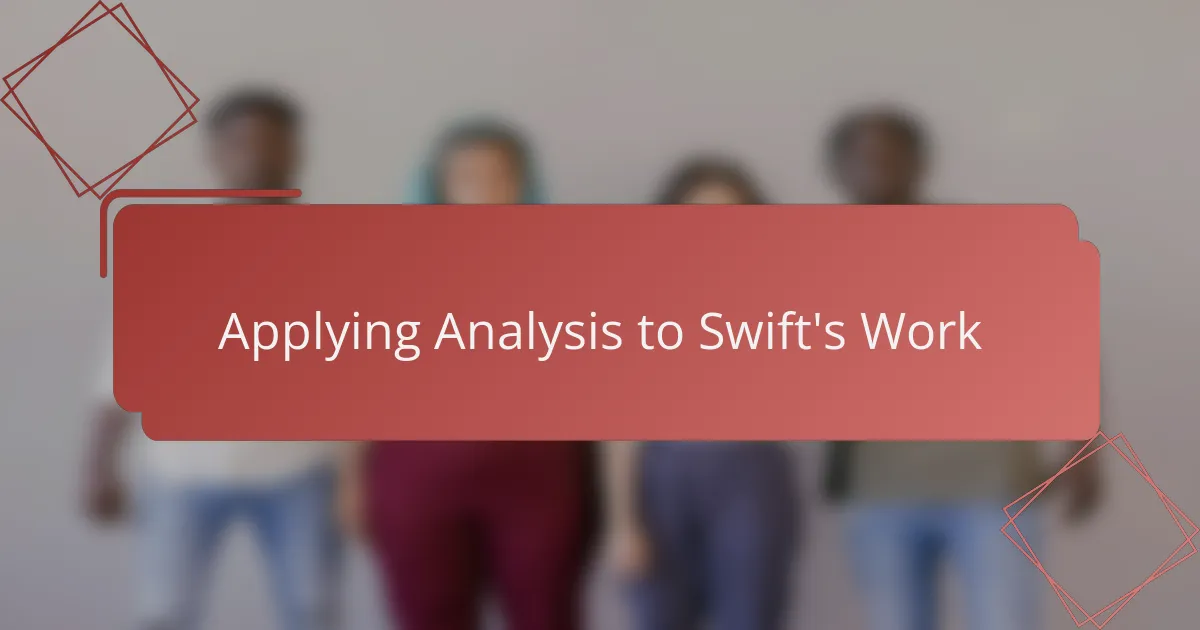
Applying Analysis to Swift’s Work
When I first dove into Jonathan Swift’s satire, I realized that applying a structured analysis helped me uncover layers I hadn’t noticed before. For example, breaking down his use of irony revealed how effectively he critiqued societal flaws without overtly offending his audience. It felt like peeling back an intricate puzzle where every word had a deeper meaning waiting to be discovered.
What struck me most was how Swift’s exaggeration forced me to question my own assumptions about politics and human nature. Here’s how I approached it step-by-step in my analysis:
- Identified key satirical devices: irony, exaggeration, and parody
- Examined historical and political context influencing Swift’s perspective
- Compared Swift’s tone with other satirical works from his era
- Analyzed the target of his satire—whether individuals, institutions, or social norms
- Reflected on the emotional response his satire evoked in me, enhancing my understanding of its impact
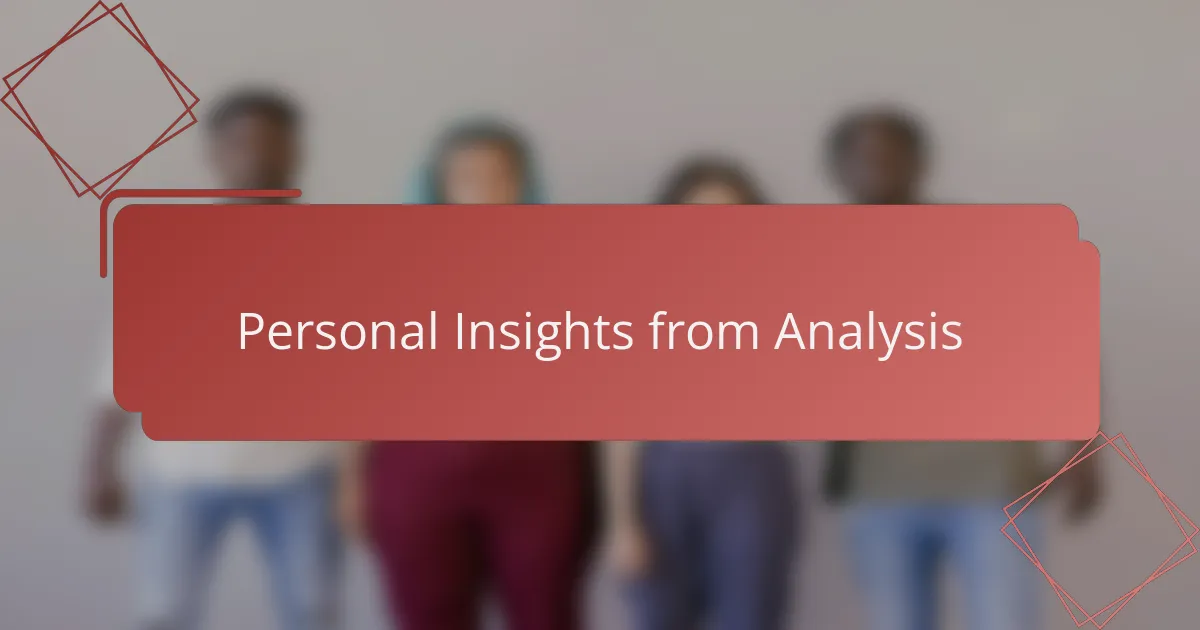
Personal Insights from Analysis
Diving into Jonathan Swift’s satire, I found myself struck by the sharpness of his wit, which still resonates deeply. His ability to expose societal flaws without outright condemnation reminded me of times when I wished I could address issues with the same subtlety and impact.
What really stood out to me was how Swift’s satire provoked reflection rather than defensiveness—something I’ve struggled with in my own writing. It taught me that effective political satire isn’t just about humor; it’s a clever invitation for readers to question and reconsider their views.
- Swift uses irony to expose political hypocrisy without alienating his audience.
- His exaggeration highlights absurdity but remains grounded in reality.
- The use of persona lets him distance himself, making the critique more palatable.
- Emotional appeals wrapped in humor create a powerful connection with readers.
- Swift’s subtlety encourages self-reflection rather than outright confrontation.
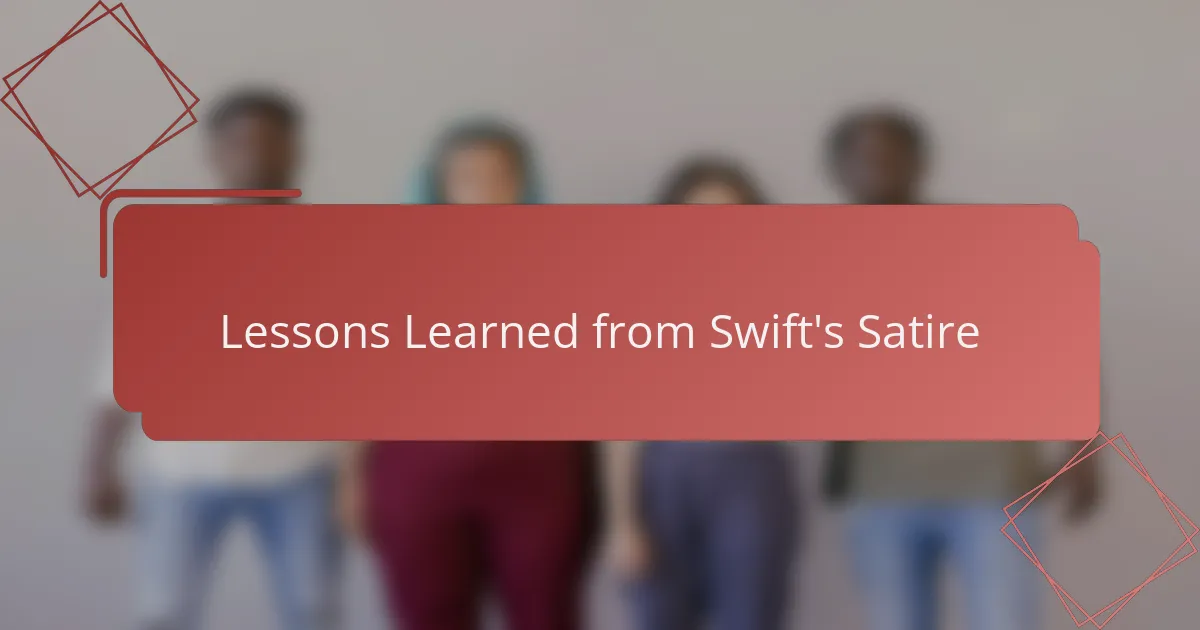
Lessons Learned from Swift’s Satire
Lessons Learned from Swift’s Satire have profoundly shaped how I approach political critique. His fearless use of irony to expose societal flaws taught me that powerful messages often lie beneath sharp wit. I recall feeling both amused and unsettled as I realized satire’s potential to provoke thought and inspire change without direct confrontation.
| Lesson from Swift | My Insight |
|---|---|
| Use of Irony to Highlight Hypocrisy | Irony helps me deliver critique in a way that challenges readers to think deeply rather than feel attacked. |
| Exaggeration to Uncover Truth | Exaggeration reveals absurdity in real issues, making problems clearer and harder to ignore. |
| Engaging Storytelling | Storytelling in satire builds emotional connection, making political subjects more relatable and compelling. |
